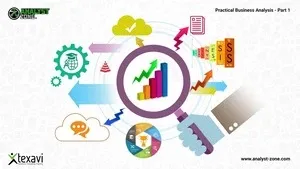This plan includes
- Limited free courses access
- Play & Pause Course Videos
- Video Recorded Lectures
- Learn on Mobile/PC/Tablet
- Quizzes and Real Projects
- Lifetime Course Certificate
- Email & Chat Support
What you'll learn?
- You will learn to see the psychological discomfort of the person.
- You will see when to comfort the person.
- You will see when the person doesn't want to spend time with you.
- You will see when to fight for your place and status.
- You will learn new frameworks how to implement body language into your everyday life.
- Seeing emotions and feelings of others - positive and negative, too.
- You will learn how to detect lies.
- Interpreting efficiently body language signs.
- Reading & interpreting facial expressions.
- Implementing this new skill into everyday conversations.
- You will see when people are having truly good time with you.
- You will learn how to read your partner. How are you doing in a particular relationship.
Course Overview
Have you ever spoken to someone and wondered what is going on behind their facade of theirs?
Have you ever asked yourself: “What can I expect from this person?”
Have you ever wished to have the skill of getting these “in-between lines” messages?
Simply look at the person and know…there is a way!
It’s called BODY LANGUAGE and you are just a step away from getting this amazing skill!
Every single day you are involved in conversations with people around you starting at home with your family, with your colleagues at work ending with a shop assistant at an off-license where you go for a late-night drink.
All these are communication on 2 levels: verbal, you understand this one properly and nonverbal, you have likely heard of it but most likely never been really trained to decode these subtle but important messages conveyed by body postures, stances, way of walk, facial expressions, shoulder and elbow positions or direction of the body.
Body Language, the nonverbal part of communication conveys subconscious messages about the feelings, moods, intentions, and emotions and when you understand these, you literally read the minds of others.
You see how they feel, where they want to go, whether they trust themselves or they are intimidated by you. You are getting a powerful tool now. How are you going to use it?
LEARN and MASTER 5 MAIN PRINCIPALS of Body&Mind Reading Program
#1 - Body Language of Intentions
Teaching you how to read where the attention of the person goes. You know, attention is a currency so you must know how to read it.
#2 - Status
Who's the dominant one, that you may want to tackle, and who is the submissive that is likely to obey?
#3 - Stress
Knowing when one is stressed is a priceless skill, you know when someone just plays Mr. Hardball and is chickened on the inside. You know better how to treat others afterward.
#4 - Facial Expressions
Happiness, sadness, fear or surprise, anger or disgust, maybe contempt? The face speaks a lot, learn the language so you know what it says.
#5 - Relationships
Behaviour in interactions with other people has its rules and theories so you know better how they perceive you. Do they like you or resent you? Do they strive to dominate you or do they want to be friends?
What others have said about the course?
"The course was useful for me as I struggled connecting with my patients. While studying you learn about things that are intuitive about but once you apply them, it really makes difference. I especially enjoyed Martin's support during the course."
-Martin, the dentist
I can say without a doubt that you really know your stuff ??
-Nick, the manager
Pre-requisites
- You must be open-minded and interested in human behaviour with a will to learn more. You will learn the rest in the course.
Target Audience
- Those who want to develop stronger empathy & sympathy.
- Those who want to see what others feel and possibly don't share.
- Those who want to improve in communication.
- For body language enthusiast.
- Those interested in psychology.
- Those who want to improve their reading body language skills.
Curriculum 104 Lectures 05:04:43
Section 1 : Welcome to the course
- Lecture 2 :
- About me
Section 2 : Introduction to Observing Body Language
- Lecture 1 :
- Introduction to section 2
- Lecture 2 :
- How obvious signs in body language are?
- Lecture 3 :
- Advantages of reading body language
- Lecture 4 :
- The biggest mistake to avoid
- Lecture 5 :
- How body language changed my life?
Section 3 : 3 rules of observing body language
- Lecture 1 :
- Why are the rules important?
- Lecture 2 :
- #1 - Context of observing
- Lecture 3 :
- #2 - Clusters of behaviour
- Lecture 4 :
- #3 - Congruency of signs
- Lecture 5 :
- Summary
Section 4 : #1 - Body Language of Intentions
- Lecture 1 :
- What is BLI?
- Lecture 2 :
- Time-Frames in observing body language
- Lecture 3 :
- Eye Contact
- Lecture 4 :
- Reading Head Area
- Lecture 5 :
- Reading Head Movements
- Lecture 6 :
- Reading Torso Area
- Lecture 7 :
- Reading Feet Area
- Lecture 8 :
- Summary on the lesson
Section 5 : #2 - Status Game
- Lecture 1 :
- What is the status game?
- Lecture 2 :
- Reading Head Movements
- Lecture 3 :
- Reading Eye Movements
- Lecture 4 :
- Reading Shoulders and Arms Movements
- Lecture 5 :
- Reading Stances
- Lecture 6 :
- Reading ways of sitting
- Lecture 7 :
- Summary
Section 6 : #3 - How to detect STRESS in people?
- Lecture 1 :
- Why does it matter?
- Lecture 2 :
- Reading Eye Movements
- Lecture 3 :
- Reading Hand Movements
- Lecture 4 :
- Reading Leg Movements
- Lecture 5 :
- Interpreting Self-Touching
- Lecture 6 :
- Interpreting See No Evil! signs
- Lecture 7 :
- Interpreting Speak No Evil! signs
- Lecture 8 :
- Intepreting Hear No Evil! sings
- Lecture 9 :
- Interpreting Facial Blocking
- Lecture 10 :
- Interpreting Suprasternal Notch Blocking
- Lecture 11 :
- Interpreting Torso & Hips Blocking
- Lecture 12 :
- Interpreting Leg Blocking
- Lecture 13 :
- Summary of detecting stress behaviour
Section 7 : #4 - Interpreting Facial Expressions
- Lecture 1 :
- Introduction
- Lecture 2 :
- PART ONE: What are Macro-Expressions?
- Lecture 3 :
- Hapiness
- Lecture 4 :
- Happy Eye Contactions
- Lecture 5 :
- Happy Mouth Movements
- Lecture 6 :
- Genuine / Fake Smile
- Lecture 7 :
- Sadness
- Lecture 8 :
- Sad Brow Movements
- Lecture 9 :
- Sad Eye Movements
- Lecture 10 :
- Sad Mouth Movements
- Lecture 11 :
- Anger
- Lecture 12 :
- Angry Brow Movements
- Lecture 13 :
- Angry Eye Movements
- Lecture 14 :
- Angry Mouth Movements
- Lecture 15 :
- Disgust
- Lecture 16 :
- Disgusted Facial Movements
- Lecture 17 :
- Contempt
- Lecture 18 :
- Contemptuous Facial Movements
- Lecture 19 :
- Surprise
- Lecture 20 :
- Surprised Brow Movements
- Lecture 21 :
- Surprised Eye Movements
- Lecture 22 :
- Surprised Mouth Movements
- Lecture 23 :
- Fear
- Lecture 24 :
- Afraid Brow Movements
- Lecture 25 :
- Afraid Eye Movements
- Lecture 26 :
- Afraid Mouth Movements
- Lecture 27 :
- Blending Facial Expressions
- Lecture 28 :
- PART TWO: What are Micro-Expressions?
- Lecture 29 :
- Be Careful When Reading Them
- Lecture 30 :
- Happiness
- Lecture 31 :
- Sadness
- Lecture 32 :
- Anger
- Lecture 33 :
- Disgust
- Lecture 34 :
- Contempt
- Lecture 35 :
- Surprise
- Lecture 36 :
- Fear
- Lecture 37 :
- Overall Summary of Facial Expressions
Section 8 : #5 - Body Language in Relationships
- Lecture 1 :
- What to expect from the lesson?
- Lecture 2 :
- Leaning
- Lecture 3 :
- Touches
- Lecture 4 :
- Distances
- Lecture 5 :
- Seating Arrangements
- Lecture 6 :
- Summary of Relationships
Section 9 : How to Improve Your Body Language Observing Skills
- Lecture 1 :
- Introduction
- Lecture 2 :
- How to practise?
- Lecture 3 :
- When to practise?
- Lecture 4 :
- How to raise your awareness
- Lecture 5 :
- Mental training
- Lecture 6 :
- How to take notes
- Lecture 7 :
- Summary
Section 10 : How to Apply Body Language in Real Life?
- Lecture 1 :
- Introduction to Dating
- Lecture 2 :
- What to be aware of in reading dating signs
- Lecture 3 :
- Positive Dating Signs
- Lecture 4 :
- Negative Dating Signs
- Lecture 5 :
- Job Interview
- Lecture 6 :
- Small Talk Situation
- Lecture 7 :
- Other Occassions
Section 11 : 4 Pillars of Confident Communication
- Lecture 1 :
- Introduction
- Lecture 2 :
- Confidence projecting
- Lecture 3 :
- The confidence stance exercise
- Lecture 4 :
- Safety & Security Management
- Lecture 5 :
- Confident Communication Tips
- Lecture 6 :
- How to support others in communication
- Lecture 7 :
- Summary
Our learners work at
Frequently Asked Questions
How do i access the course after purchase?
It's simple. When you sign up, you'll immediately have unlimited viewing of thousands of expert courses, paths to guide your learning, tools to measure your skills and hands-on resources like exercise files. There’s no limit on what you can learn and you can cancel at any time.Are these video based online self-learning courses?
Yes. All of the courses comes with online video based lectures created by certified instructors. Instructors have crafted these courses with a blend of high quality interactive videos, lectures, quizzes & real world projects to give you an indepth knowledge about the topic.Can i play & pause the course as per my convenience?
Yes absolutely & thats one of the advantage of self-paced courses. You can anytime pause or resume the course & come back & forth from one lecture to another lecture, play the videos mulitple times & so on.How do i contact the instructor for any doubts or questions?
Most of these courses have general questions & answers already covered within the course lectures. However, if you need any further help from the instructor, you can use the inbuilt Chat with Instructor option to send a message to an instructor & they will reply you within 24 hours. You can ask as many questions as you want.Do i need a pc to access the course or can i do it on mobile & tablet as well?
Brilliant question? Isn't it? You can access the courses on any device like PC, Mobile, Tablet & even on a smart tv. For mobile & a tablet you can download the Learnfly android or an iOS app. If mobile app is not available in your country, you can access the course directly by visting our website, its fully mobile friendly.Do i get any certificate for the courses?
Yes. Once you complete any course on our platform along with provided assessments by the instructor, you will be eligble to get certificate of course completion.
For how long can i access my course on the platform?
You require an active subscription to access courses on our platform. If your subscription is active, you can access any course on our platform with no restrictions.Is there any free trial?
Currently, we do not offer any free trial.Can i cancel anytime?
Yes, you can cancel your subscription at any time. Your subscription will auto-renew until you cancel, but why would you want to?
Instructor

784 Course Views
1 Courses



 Tech & IT
Tech & IT
 Business
Business
 Coding & Developer
Coding & Developer
 Finance & Accounting
Finance & Accounting
 Academics
Academics
 Office Applications
Office Applications
 Art & Design
Art & Design
 Marketing
Marketing
 Health & Wellness
Health & Wellness
 Sounds & Music
Sounds & Music
 Lifestyle
Lifestyle
 Photography
Photography




.png)









